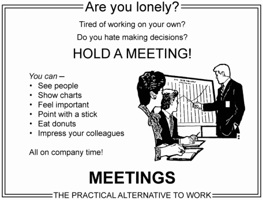Where motivation meets creativity is in the experimentation. For a business, having staff that are...
Good Life
After almost half a century, I know what makes me happy. For instance, it’s impossible for me to move passed Ferris Bueller’s Day Off as I flip through channels. I must keep it on. It makes me very happy. And while there are significantly poignant and sad moments, I connect to it all and smile. But that happiness will fade once the movie is over (well, maybe it will last for the day). I experience it for a time. But, are there lasting effects?
The study of happiness is no longer just a fad. It’s not that we must work to make others happy, but rather, we’re challenged to consider the environment we shape and whether that is conducive to achieving happiness and contentment. This work has been evaluated and studied much more over the last decade, and the data comes to us from a global perspective. The Nordic region of the globe have most recently been assessed to be the happiest people, and yet, that does not mean everyone maintains an ethereal glow of happy.
“Despite the fact that we in the Nordic countries consistently top the international rankings of subjective well-being and satisfaction with life, many Danes, Finns, Icelanders, Norwegians and Swedes still experience that they are struggling or suffering (i.e. the opposite of happiness)…When all of the variables (life circumstances) are tested in relation to their explanatory power for states of struggling or suffering, we find a number of significant relations. Life circumstances such as poor general health, poor mental health, income, unemployment, limited social contact and religiosity (the degree to which one has faith in a religion) all play a role. However, some factors are far more significant than others” (In the Shadow of Happiness, Nordic Council of Ministers, 2018).
Those variables listed overlap greatly into the modern workforce. Organizations influence access to affordable healthcare through coverages. They affect compensation levels through salary banding or grading opportunities. And human interaction can be steadily influenced by collaborative efforts, think tanks, committees, etc. in the workplace. The power of leadership and its ability to forge healthy roads in these areas will be tested. People want these levels of support and opportunity. Can your leadership commit to it?
And before some of you think this is mumbo-jumbo, feel-good crapola, Shawn Achor has been studying this since the early 2000’s. “A decade of research proves that happiness raises nearly every business and educational outcome: raising sales by 37%, productivity by 31%, and accuracy on tasks by 19%, as well as a myriad of health and quality of life improvements.” We have a competitive consideration or two in this! For many in management, you may already be acutely aware of these needs to bolster employee engagement and performance. What is likely lacking is a plan to make it happen.
It's time to sit with leadership to review options for improvement, not just in the offerings in some of these “struggle” areas, but also in the communication plan of what is already in place. The experience of the workforce is often ignorance in what they have access to, and without clarity, they default into thinking it’s not there. And to be fair, does management truly know what it has? Be diligent in the conversations with brokers and vendors, with county agencies and with civic groups to see what you can access right now. Often, companies are surprised to learn how much is available to their staff.
Further, inequity can stymie happiness. Is the impression in your organization that only some get access to perks, fair consideration, support? Some departments may be underserved due to poor leadership or non-intentional communication. Break through those perceived inequities. Of course, if your organization is operating in conscious bias, there are amplified issues of employees that are struggling or suffering. It may be worth a focus group chat, representing employees across departments and levels of responsibilities. Ask them what their experiences have been like.
While we’re not the happiness police, we are keepers of factors influencing it. Ferris was able to get to Cameron in a way that no one else could. He would diagnose and treat Cameron accordingly. Let’s be a little more like Ferris in review of our organizations.




Blog comments